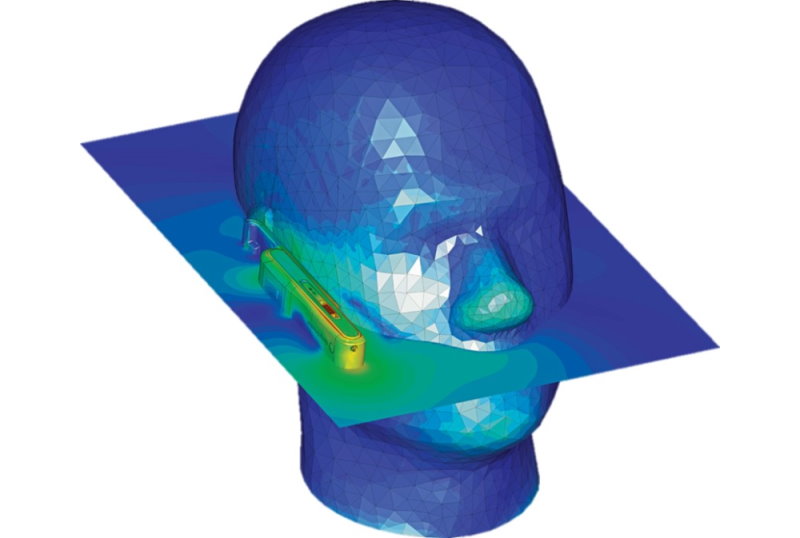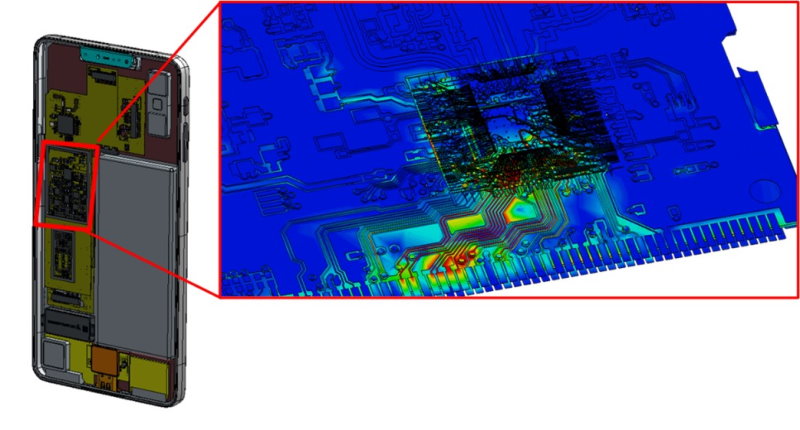
Bio-electromagnetic simulation for wearable devices
Smartwatches, fitness trackers, medical monitoring devices and even clothing with embedded sensors – wearable devices have become omnipresent. They often use wireless communication technologies such as Bluetooth, Wi-Fi, GPS, RFID, wireless charging and GSM (5G). Understanding the interactions between the human body and the electromagnetic fields produced by the devices is crucial as the effects will be impacting the performance of wearables in various domains.
Antenna design
Firstly, the presence of the human body can change the radiation pattern and efficiency of the antenna. This is because the body can absorb, reflect and scatter the electromagnetic waves emitted by the antenna, leading to changes in the amplitude, direction and polarization of the waves. As a result, the antenna’s performance will be degraded, which negatively impacts signal connectivity and battery lifetime. The latter is especially important for wearables as there’s limited space for batteries. With poor connectivity, the amplifier must increase its signal strength, resulting in even more power consumption.
With simulation, we can validate the best antenna design, verify the optimum antenna placement within our product, check how multiple antennas interact and test how various housing materials and designs affect the antenna. Another important design factor is the position of the wearable device versus the human body. While making a call with your phone, you’ll be blocking the signal with your hand and device. Similarly with earbuds, where the ear auricle will be blocking the signal. This is difficult to measure and can only be verified by simulation.

EMC compliance
Secondly, the antenna’s proximity can also affect the human body itself. If the antenna emits high-power electromagnetic waves, it can cause tissue heating, which can be harmful to the body. The degree of heating depends on the frequency and power level of the waves, as well as the distance between the antenna and the body. Therefore, it’s important to ensure that the antenna is designed and operated in a way that minimizes the risk of harm.
Checking safety is a legal requirement for many applications. SAR (Specific Absorption Rate) is a measure of the rate at which energy is absorbed by the body when exposed to electromagnetic fields. It’s part of electromagnetic compatibility (EMC) to which every electronic device must comply. This is especially challenging as the inside of the human body is typically inaccessible to measurements, which makes simulation the only reliable way to analyze these effects.
By simulating electromagnetic interference at an early phase of the design, we can significantly increase the chances of passing EMC certification on the first attempt and considerably speed up our time-to-market. There are also examples where designers ‘over-engineer’ by adding extra shielding just to be sure their design is EMC compliant. This results in unnecessary bill-of-material costs, which can be prevented by simulating whatever is actually required.
Electromagnetic simulation software
CST, part of the Dassault Systèmes Simulia offering, is a software package that can be used for electromagnetic simulation. It allows the modeling and analysis of a wide range of electromagnetic phenomena, including antennas, RF/microwave components and EMC issues.
To perform bio-electromagnetic simulations using CST, first import or create a model of the antenna, the RF circuit and the mechanical characteristics of the wearable. Next, select the appropriate human voxel model, which is a representation of the human body as a 3D grid of small cubic cells, each with a certain material property. We can either choose the full body or a specific body part such as an arm or head. These voxel models include anatomical models of organs and tissues, as well as models of the electrical properties of the tissues.
The CST package provides a wide range of solvers to simulate an accurate representation of the electromagnetic fields of the combined virtual twin and the voxel model. Thanks to a special algorithm, the software can do this very quickly. Its performance can be further enhanced by using parallel and/or high-performance computing.

Other applications
The same philosophy can be used for other applications as well. Every product that includes connectivity, has an antenna or requires EMC certification can benefit from simulating electromagnetic effects in the pre-prototype phase. It saves time, reduces costs and facilitates innovation in various industries, such as telecommunications, consumer goods, healthcare, automotive, aerospace, photonics and quantum computing. Overall, simulation is a valuable tool for designing and optimizing wearable devices to ensure that they meet performance requirements and safety standards and they’re reliable in their operation.





